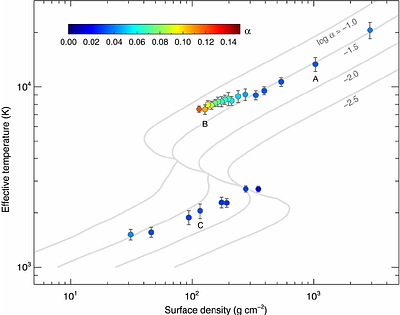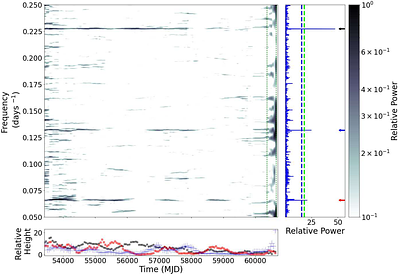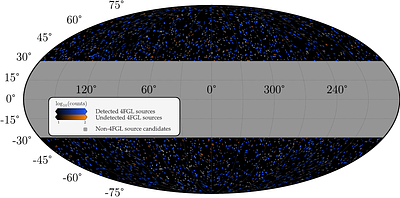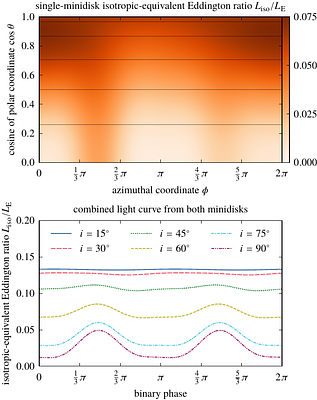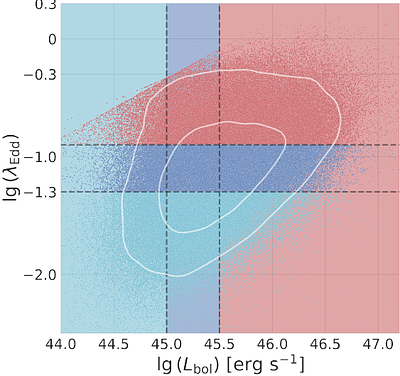By: Omer Blaes, Yan-Fei Jiang, Jean-Pierre Lasota, Galina Lipunova
By: M. C. Bezuidenhout, N. D. R. Bhat, M. Caleb, L. N. Driessen, F. Jankowski, M. Kramer, V. Morello, I. Pastor-Marazuela, K. Rajwade, J. Roy, B. W. Stappers, M. Surnis, J. Tian
By: P. Romano INAF/OAB, H. I. Cohen CUA CSST Uni. Maryland NASA GSFC, E. Bozzo Univ. Geneve INAF/OAB, N. Islam CSST Uni. Maryland NASA GSFC, A. Lange GWU CSST Uni. Maryland NASA GSFC, R. H. D. Corbet CRESST and CSST NASA GSFC Maryland ICA, B. Coley Howard Univ CRESST, K. Pottschmidt Uni. Maryland CRESST
By: Miljenko Čemeljić, Włodek Kluźniak, Sukalpa Kundu
By: Christopher Eckner, Noemi Anau Montel, Florian List, Francesca Calore, Christoph Weniger
By: Bhagya M. Subrayan, David J. Sand, K. Azalee Bostroem, Saurabh W. Jha, Aravind P. Ravi, Michaela Schwab, Jennifer E. Andrews, Griffin Hosseinzadeh, Stefano Valenti, Yize Dong, Jeniveve Pearson, Manisha Shrestha, Lindsey A. Kwok, Emily Hoang, Jeonghee Rho, Seong Hyun Park, Sung-Chul Yoon, T. R. Geball, Joshua Haislip, Daryl Janzen, Vladimir Kouprianov, Darshana Mehta, Nicolás Meza Retamal, Daniel E. Reichart, Moira Andrews, Joseph Farah, Megan Newsome, D. Andrew Howell, Curtis McCully
Radiative magnetohydrodynamics simulation of minidisks in equal-mass massive black hole binaries
By: Chi-Ho Chan, Vishal Tiwari, Tamara Bogdanović, Yan-Fei Jiang, Shane W. Davis
By: Liang-Gui Zhu, Xian Chen
By: Mayank Pathak, Banibrata Mukhopadhyay
By: Mridweeka Singh, Lindsey A. Kwok, Saurabh W. Jha, R. Dastidar, Conor Larison, Alexei V. Filippenko, Jennifer E. Andrews, Moira Andrews, G. C. Anupama, Prasiddha Arunachalam, Katie Auchettl, Dominik BÁnhidi, Barnabas Barna, K. Azalee Bostroem, Thomas G. Brink, RÉgis Cartier, Ping Chen, Collin T. Christy, David A. Coulter, Sofia Covarrubias, Kyle W. Davis, Connor B. Dickinson, Yize Dong, Joseph Farah, Andreas FlÖrs, Ryan J. Foley, Noah Franz, Christoffer Fremling, LluÍs Galbany, Anjasha Gangopadhyay, Aarna Garg, Elinor L. Gates, Or Graur, Alexa C. Gordon, Daichi Hiramatsu, Emily Hoang, D. Andrew Howell, Brian Hsu, Joel Johansson, Arti Joshi, Lordrick A. Kahinga, Ravjit Kaur, Sahana Kumar, Piramon Kumnurdmanee, Hanindyo Kuncarayakti, Natalie Lebaron, C. Lidman, Chang Liu, Keiichi Maeda, Kate Maguire, Bailey Martin, Curtis Mccully, Darshana Mehta, Luca M. Menotti, Anne J. Metevier, A. A. Miller, Kuntal Misra, C. Tanner Murphey, Megan Newsome, Estefania Padilla Gonzalez, Kishore C. Patra, Jeniveve Pearson, Anthony L. Piro, Abigail Polin, Aravind P. Ravi, Armin Rest, Nabeel Rehemtulla, Nicolas Meza Retamal, O. M. Robinson, CÉsar Rojas-Bravo, Devendra K. Sahu, David J. Sand, Brian P. Schmidt, Steve Schulze, Michaela Schwab, Manisha Shrestha, Matthew R. Siebert, Sunil Simha, Nathan Smith, Jesper Sollerman, Shubham Srivastav, Bhagya M. Subrayan, TamÁs Szalai, Kirsty Taggart, Rishabh Singh Teja, Jacco H. Terwel, Samaporn Tinyanont, Stefano Valenti, JÓzsef VinkÓ, Aya L. Westerling, Yi Yang, Weikang Zheng
